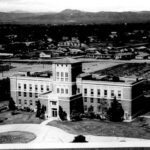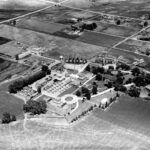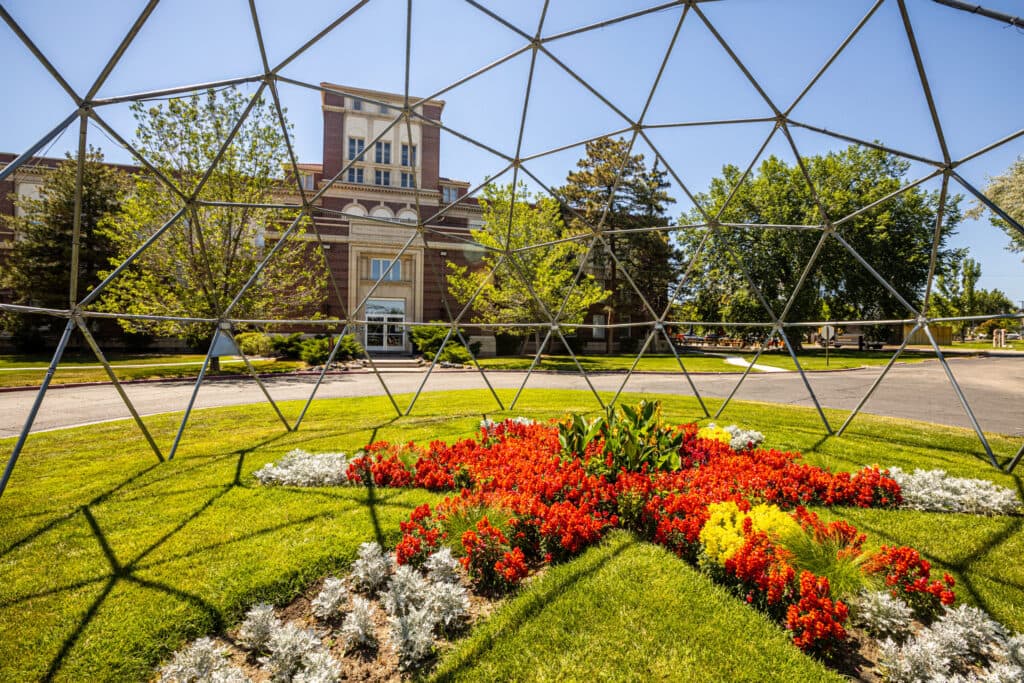Our gorgeous and historical campus is often a selling point for potential students. From the pink velvet auditorium, to the original glass in the sunroom, to the red brick buildings, our campus boasts a perfect intersection between modern and antique style. More than a hundred years of history has taken place on the RMCAD campus, starting with its creation in 1904 by the Jewish Consumptives’ Relief Society or JCRS, where it was built as a tuberculosis hospital.
Tuberculosis (TB) was very common at this point in history, and the sunshine and dry air in Denver, which was thought to help TB symptoms, attracted many to the Mile High City. With so many consumptives immigrating to Denver, the city quickly became overwhelmed. Many were living in tents on the banks of the Platte River in unclean conditions. The West Colfax Jewish community came together to help and they built JCRS as a hospital and dormitory for the unhoused and ill immigrants. JCRS was built on land owned by the Robinson Dairy Farm so that kosher dairy and meat products could be easily provided to the mostly Orthodox Eastern European Jewish patients.
At this same time, Colfax Avenue, where the campus sits, was becoming one of the wealthiest and most beautiful streets in Denver. Lavish mansions on large properties lined East Colfax. Unlike its glamorous and extravagant East Colfax neighbors, our West Colfax campus started with humble beginnings with just a couple of buildings for the medical staff and grounds keepers, and one room “Tucker Tents” for the patients. The hospital did not have paved roads or railroad access, so patients and visitors had to ride by horseback or horse drawn carriage from Sheridan Boulevard. Soon donations started flooding in, and the campus was able to expand to build dormitories and an entertainment center.
After WWII, the area quickly became popular for road-trippers as they passed through on their way to the mountains or the West Coast. Motels, theme parks, restaurants and neon lights lined the road for miles. Along with these entertainment and hospitality advancements, the world also experienced a medical breakthrough that led to the ability to cure tuberculosis.
With a decreased need for consumptive care, JCRS repurposed into the American Medical Center, a cancer research hospital. Several new buildings were erected that are still in place today. Even though the campus was growing, the neighborhood surrounding the new buildings was greatly suffering. With the introduction of I-70 and 6th Avenue at the end of the 20th century and a severe decrease in both foot and road traffic, Colfax’s economy collapsed. The once popular strip became abandoned.
By 2009, the American Medical Center had left the campus and the buildings were converted into classrooms for RMCAD. Today, new renovations, historical building restorations and beautification projects have helped to revive the historic area. Trendy neighborhoods are continuously popping up, old neighborhoods are revamping for newcomers and many of the historic mansions are turning into upscale apartment complexes or museums. We like to think RMCAD has helped play a part in bringing Colfax’s charm and economy back to life again.
If you are looking for more information on the history of the RMCAD campus, visit the RMCAD library in the Triboro building or stay tuned for more history blogs to come in the future!
A special thank you to RMCAD’s library and front desk staff for sharing RMCAD’s history with us as well as associate professor of humanities, Dr. Keefe.






